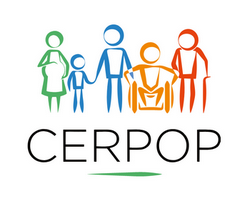Incidence of unintended pregnancies and pregnancy experience among adolescents living with perinatally-acquired HIV in West Africa: a mixed-method study
Résumé
We conducted a mixed-method study nested in the OPTIMISE-AO-ANRS-12390 project, a stepped-wedge interventional trial launched in 2021 to support HIV-disclosure and antiretroviral treatment (ART) adherence in assenting ALHIV aged 10-17 years in Abidjan, Cote d'Ivoire and Ouagadougou, Burkina Faso. We estimated the 18-month incidence rate of pregnancy per 100 woman-years (WY) among those older than 14 years at inclusion. In Abidjan, semi-structured interviews were also conducted with eight adolescents who became pregnant since their inclusion to report their pregnancy experience.
After 18 months of follow-up, 12 pregnancies occurred among the 111 ALHIV followed up over 153 WY, yielding an overall pregnancy incidence of 7.8/100 WY (95% confidence interval [95%CI]: 4.4-13.7). Stratified by age at enrolment, it was 2.2 (95%CI: 0.3-15.5), 7.6 (95%CI: 2.8-20.3), 13.1 (95%CI:5.4-31.4), 11.5 (95%CI: 2.8-45.8) per 100 WY in those aged 14, 15, 16, and 17 years, respectively. After birth, all the newborns (12/12) had received prevention of HIV mother-to-child transmission ART, and were HIV-negative at the 6-week early infant HIV diagnosis. The eight ALHIV interviewed shared that the discovery of their pregnancy, all unintended, was a shock, and led to negative consequences, such as rejection from their family, and stigmatisation. Most attempted to terminate their pregnancy unsuccessfully. They reported major financial challenges associated with their pregnancy that forced them to find a job rather than going back to school after delivery.
| Origine | Publication financée par une institution |
|---|---|
| licence |




